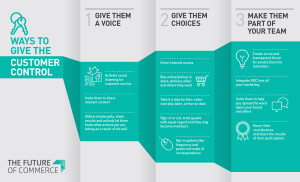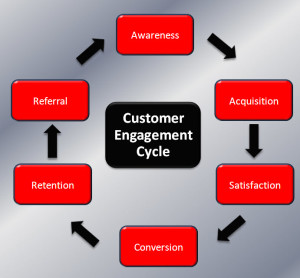When it comes to current marketing strategies, social media pops up a lot. In fact, if your company is not on the band wagon yet then you may be considered behind the times and need to remedy this ASAP (Flaxington, 2015). Building one’s brand in a digital age means understanding how your company can use this inexpensive and fast method of connecting to consumers and keeping them hooked (Vaynerchuk, 2013). Engaging consumers is often looked at in social media (tweeting/retweeting, sharing/liking, commenting, hashtags, etc.) as a way of not only promoting one’s brand but building a lasting relationship with your audience as customers and not people (Girdler, 2014, What the Fourth Wall Does).
The “fourth wall” is described as the space that separates a performer or performance from an audience (Faux, 2014, p.1). So breaking this wall allows people watching to interact with the performer or in this case, the brand or company. Social media is a great way for marketers to get through this “wall” and allow their consumers to react/share and give feedback in real time. However, is this necessary? Do companies need to be more entertaining and push the boundaries of consumer/brand relationships in order to be successful? TV ads have done this already with commercials (Faux, 2014) but what about social media?
Well, it would seem that customer engagement can lead to many positive things for your brand such as brand loyalty, awareness or customer referrals to friends (“word of mouth”) (Flaxington, 2015). However, to keep consumers engaged with your brand constantly can be a challenge. It’s not enough to have a Twitter or Facebook page telling people what your current product promotion is when they come out…there has to be new, fresh material on a consistent basis and it better be good (Vaynerchuk, 2013). The more likes, retweets, comments and shares or reblogs can let a company know what works and what does not. While breaking this wall may not be the final answer for success in marketing it can certainly help in creating interest and new buyers while keeping customers tuned in to what your brand is doing. In fact, you may even be able to get them to provide some ideas for your next campaign.
References:
Faux, C. (2014, February 16). Breaking the fourth wall. JB Chicago. Retrieved from http://www.jbchicago.com/breaking-the-fourth-wall/
Flaxington, B. (2015, July 21). Four proven principles for success on social media. ValueWalk. Retrieved from http://www.valuewalk.com/2015/07/social-media-for-financial-advisors/
Girdler, J. (2014, July 10). When marketers break the fourth wall. Social Media Today. Retrieved from http://www.socialmediatoday.com/content/when-marketers-break-fourth-wall
Vaynerchuk, G. (2013). Jab, Jab, Jab, Right Hook: How to tell your story in a noisy, social world.



3 Responses to Breaking the Fourth Wall in Marketing: Necessary for Success?